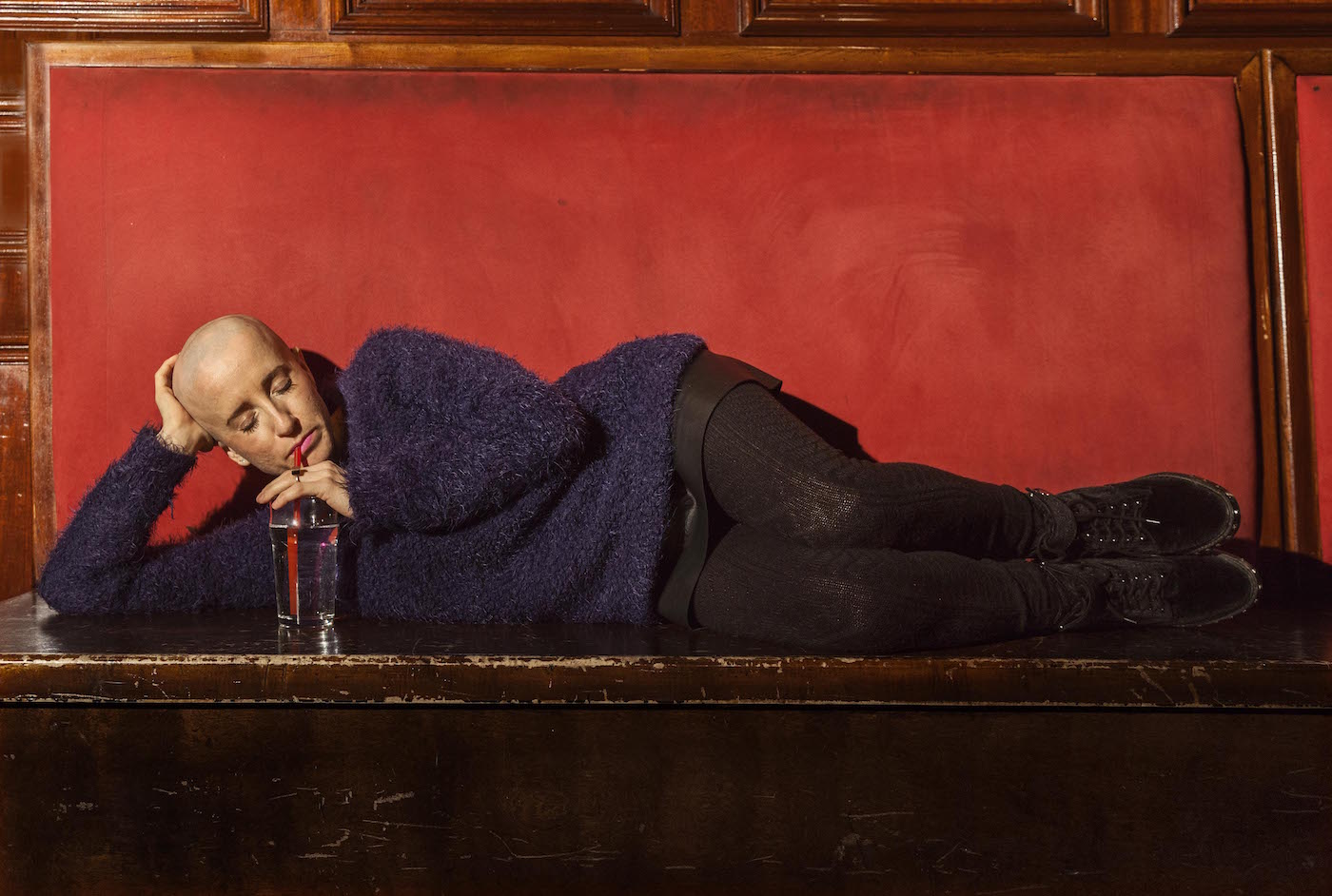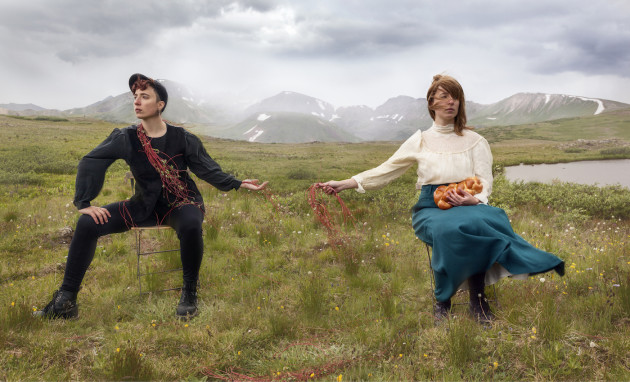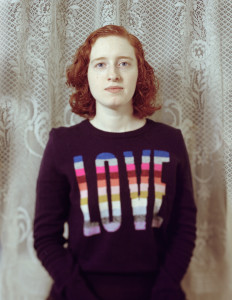
by Rebecca Halff
There Are No Queer Chassidic Jews; Or, Why Shterna Goldbloom Is Photographing Them
 “I want to show that there are so many ways to be a person,” says artist Shterna Goldbloom about her photography, which centers queer Jewish identities and challenges notions of what it means to be either and both. Goldbloom’s photographs, many of them self-portraits, as in her series Sitra Achra (“other side”), explore Jewish queerness with a double consciousness that reveals her history. Raised in Chicago’s Hasidic community, Goldbloom left that world at age sixteen, after her parents divorced and her mother came out as queer. “I was such a good student, everybody thought I would marry a rabbi. And I thought that too,” says Goldbloom about life before her family’s ostracization by their close-knit community.
“I want to show that there are so many ways to be a person,” says artist Shterna Goldbloom about her photography, which centers queer Jewish identities and challenges notions of what it means to be either and both. Goldbloom’s photographs, many of them self-portraits, as in her series Sitra Achra (“other side”), explore Jewish queerness with a double consciousness that reveals her history. Raised in Chicago’s Hasidic community, Goldbloom left that world at age sixteen, after her parents divorced and her mother came out as queer. “I was such a good student, everybody thought I would marry a rabbi. And I thought that too,” says Goldbloom about life before her family’s ostracization by their close-knit community.
Now, as a queer-identified Jewish woman who lives outside the bounds of the ultra-Orthodox world, Goldbloom makes intensely personal art that asks the age-old Jewish question: How do we exist in exile? Disconnected from the community through which we learned ritual, tradition, and meaning, how do we experience spirituality and connectedness? When one’s identity implies the rejection of certain aspects of Orthodox life, how can we keep what speaks to us, even if those pieces do not seamlessly fit into our new lives? How can queer Jews do Judaism without throwing away the entire rule book?

“The Schechting”
Goldbloom’s answer is at once simple and tremendously powerful and provocative: choice. Queer Jews can—and must, and do—make choices about what and how and with whom to observe Judaism. She speaks devotedly about Shabbat as a ritual that she has found a way to both transform and preserve. And she honors the idea of choice and the process of decision-making, as well as real women’s choices, in her work. “If women in the Hasidic community don’t want to be in the spotlight, how can I tell their stories without their faces? This is why I chose self-portraiture, a style that allows me to be a surrogate for other women’s stories,” Goldbloom said in In Geveb. “Just because people aren’t visible doesn’t mean they don’t hold power.”

“Ich Bin De Sitra”
Much of Goldbloom’s ongoing wrestling with what it means to be queer and ex-Orthodox is expressed through her photographs, which suggest a complicated longing for the comfort of Orthodox observance and aesthetic that coexists with a nuanced understanding of the ability of Orthodox Jewish communities to encompass queer identities. Goldbloom’s “Ich Bin De Sitra” (Yiddish for “I am the Other”), above, depicts the two sides of the artist, holy and unholy, facing opposite directions but each reaching her hand toward the other. Goldbloom told In Geveb that the image holds “a commitment to respect for Hasidic life…while simultaneously holding onto a critical view of its constraints.”
Goldbloom’s photography focuses intently on issues of self-presentation, a constant theme of both Hasidic and queer life. In both communities, dress is used to signal group membership and to express core community values. Goldbloom’s photos juxtapose traditional Jewish aesthetics, including modest dress, sheitels (wigs), and tichels (headscarves)—see her “Tichel Tutorial” series here—with androgynous dress, a half-shaved hairstyle, and piercings. All along, though, the woman in the photos is Goldbloom, which points to the duality of identity and experience that is at the heart of the artist’s work. Goldbloom’s is not the story of a queer Jew who escapes, rejects and resents a repressive religious environment. Hers is more complicated: while no longer willing or able to live within its confines, Goldbloom is deeply interested and invested in the world from which she sprang. She does not condemn Hasidic teachings and traditions; instead, she adapts, transforms, and interprets them in her photographs and in her spiritual life—she queers them.
 Now, as she works towards her MFA at Rhode Island School of Design, Goldbloom wants you to know about the project that inspired her to attend graduate school. “I am photographing and interviewing LGBTQIA Jews who grew up in ultra-Orthodox Jewish communities, or who are currently Orthodox. This is a project I have wanted to work on for many years, and my hope is that it shines a light on queers within the Orthodox world for participants and viewers. Visibility is key to acceptance.” If this project speaks to your identity and you would like to participate, Goldbloom invites you to reach out to her through her website.
Now, as she works towards her MFA at Rhode Island School of Design, Goldbloom wants you to know about the project that inspired her to attend graduate school. “I am photographing and interviewing LGBTQIA Jews who grew up in ultra-Orthodox Jewish communities, or who are currently Orthodox. This is a project I have wanted to work on for many years, and my hope is that it shines a light on queers within the Orthodox world for participants and viewers. Visibility is key to acceptance.” If this project speaks to your identity and you would like to participate, Goldbloom invites you to reach out to her through her website.
The views and opinions expressed in this article are the author’s own and do not necessarily reflect those of Lilith Magazine.